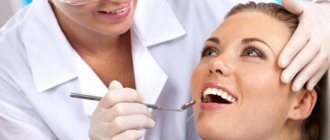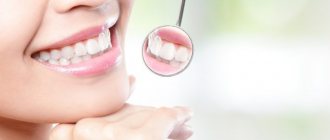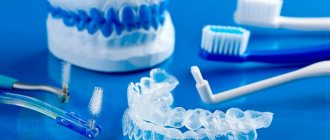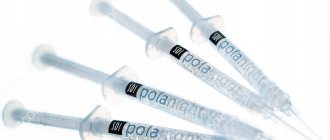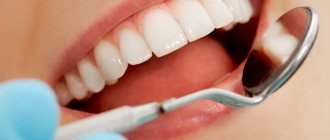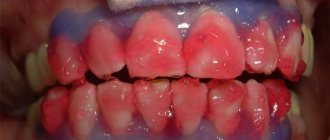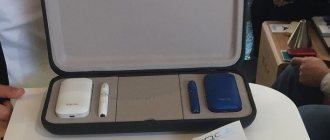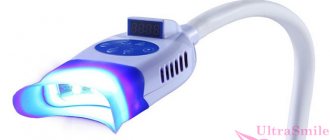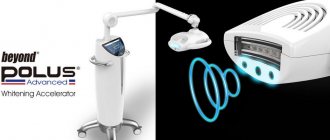What is Opalescence whitening?
Restoring the whiteness of teeth can be done at the dentist, or at home. Opalescence is a gel that has a viscous structure that stays in the trays and does not leak out of them. Their regular use guarantees high-quality and long-lasting results. Whitening with this drug is effective and does not destroy tooth enamel. Teeth that have changed color as a result of drinking coffee, wine, natural juices, under the influence of congenital, traumatic, systemic factors, or due to the use of tetracycline-based drugs can be lightened.
Who is the manufacturer?
Opalescence is manufactured by Ultradent Products, Inc. This company is focused on producing effective dental products. Dan Fisher, the head of Ultradent, has been trying to develop innovative products for dentists since the company's founding. Today, it is a global giant operating throughout the world. The company's distributors deliver products to more than 80 countries around the world. All drugs produced by Ultradent comply with the requirements of International Standards Organization 9002. In recent years, the company has received many awards for its developments and their deliveries.
How to use?
Before you begin the whitening procedure, you need to make sure that the soft tissues surrounding your teeth are healthy. You also need to cure caries and clean your teeth from plaque and stones. When whitening teeth that have been restored with amalgam, restoration may be required to restore the aesthetic appearance, since the amalgam becomes visible through the enamel. There are certain contraindications. Opalescence should not be used by pregnant or breastfeeding women, or those who are allergic to hydrogen peroxide or urea. If your gums become sore or your enamel is sensitive to cold or hot food, you must stop the whitening procedure. Not recommended for use by children under sixteen years of age. The question often arises: is Opalescence whitening possible for crooked teeth? If teeth are deformed, whitening is not recommended.
How does the whitening system work?
Carbamide peroxide and hydrogen freely penetrate through enamel and dentin into all parts of the tooth. Substances break down into oxygen radicals. They pass between the enamel prisms and destroy colored molecules, the formation of which leads to a change in the color of the enamel. The structure of the tooth does not change; the shade of its inner part simply becomes lighter. Whitening agents break down into tiny molecules that travel in all directions, whitening the entire tooth, even if it is not completely coated with the bleaching agent. The system is completely safe for enamel, dentin, fillings and bonding materials.
How to apply?
Application varies slightly depending on the type of Opalescence. Opalescence TresWhite Supreme and TresWhite Ortho Mint have trays pre-filled with gel. The mouth guard is thin and transparent, so it adapts perfectly to the teeth and is almost invisible; you need to wear it from half an hour to an hour a day. The mouthguards are intended for one-time use; there are 10 pieces in a package. The mouthguard must be removed from its protective packaging and placed in the center of a row of teeth. Then lightly press to secure it. After which the upper mouthguard is removed, and the inner one must be slightly straightened.
Opalescence PF is applied using a syringe in one thin strip. For convenience, you can have mouth guards made by your dentist. Then the drug is applied to the inside and the trays themselves are attached to the teeth. Leave the gel on your teeth for 1 to 10 hours.
Opalescence Boost PF
Opalescence Boost PF is another professional whitening product for use in clinics, which has already become widespread in Simferopol and other cities. The composition is applied in approximately the same way as Opalescence boost, but is distinguished by the presence of a preventive effect against caries and can somewhat reduce painful tooth sensitivity.
Opalescence whitening, reviews of which are extremely positive, can also be done at home. There is a special kit for this - Opalescence Patient Kit. It is used as follows: first you need to brush your teeth, and then put a special mouth guard on them, lubricated with healing gel. Everything is done simply. The trays for the upper and lower rows are covered with an even layer of gel, then they are put on the teeth and pressed lightly. The gel that came out after pressing down on their mouthguard should be carefully wiped off. You can keep the trays in place from 30 minutes to several hours. It all depends on the concentration of the active substance and the desired result.
As a conclusion, it is worth noting that reviews of Opalescence whitening are mostly positive. The product is increasingly being successfully used by many people both in dental clinics and at home, and the low price only contributes to this.
Opalescence teeth whitening technology
Today, three techniques are actively used in aesthetic dentistry: photo whitening, laser whitening and chemical whitening. All these technologies have an important similarity: the lightening process occurs thanks to a special activator gel with hydrogen or urea peroxide. The breakdown (oxidation) of hydrogen is accompanied by the release of oxygen molecules that penetrate the tooth enamel and remove pigments. The catalyst for the whitening gel is an ultraviolet lamp or semiconductor laser. Teeth whitening with the Opalescence system fits into the third category: chemical whitening does not require the use of a catalyst, since the active substances are released after a reaction between the components of the gel. Each technique has its critics and fans, but the fact remains: Opalescence is one of the most popular technologies.
Opalescence produces products for both professional and home whitening. The variety of systems for various clinical situations is one of the main success factors of the company, which tries to regularly replenish the market with new solutions. To avoid confusion, when describing, we will divide all products into two categories: professional and home whitening.
Advantages and disadvantages
- Chemical whitening allows you to lighten the enamel by 8 tones in most cases.
- Tooth tissues do not heat up due to the absence of a catalyst in the form of an ultraviolet lamp or laser.
- The price of Opalescence whitening is lower than other types of professional whitening.
- Wide range of products.
- Some experts believe that laser and photo whitening provide more effective and long-term results.
- There is a chance of getting a chemical burn to soft tissue if you do not follow safety precautions.
Professional whitening Opalescence
Professional teeth whitening Opalescence is carried out exclusively in the dentist’s office: that is why it is also called in-office. The manufacturer offers several different systems that differ in composition and purpose.
- Teeth whitening Opalescence Boost (Xtra)
is one of the most popular. This is a highly concentrated gel with 35 percent hydrogen peroxide. The Opalescence Boost whitening system contains a powerful whitening formula with carotene, which allows you to achieve positive results almost instantly. Used for express whitening of a fragment of the dentition or one tooth. Allows intracoronal whitening of pulpless teeth. - Teeth whitening Opalescence PF
is intended for sensitive teeth. The abbreviation PF means that the gel contains potassium nitrate and sodium fluoride, which reduce hypersensitivity and protect the enamel. During one visit to the doctor, you can apply the gel two or three times, and repeat the procedure after a few days. - Intra-canal bleaching Opalescence Endo
based on hydrogen peroxide is used in conditions of deep pigmentation of the tooth after nerve removal. - Opalustre suspension
containing silicon carbide particles and hydrochloric acid (6.6%). Used to eliminate shallow enamel defects caused by diseases (fluorosis, hypoplasia, etc.). Microabrasive treatment with a suspension allows you to eliminate pigment spots, unevenness and restore uniformity to the enamel. Often used in conjunction with professional whitening to achieve optimal results.
Home systems
Few people will give up a snow-white smile without visiting a dental office - this saves time, money and does not in any way affect the planning and established schedule for the near future.
Sometimes it is so difficult to find time to visit a doctor. Opalescence whitening systems can be used at home without serious health risks, and most importantly, at any convenient time of the day.
Home systems have a milder whitening effect due to the inclusion of carbamide peroxide in the working gels and a reduced content of the working component.
Opalescence PF
This option includes sodium fluoride and potassium nitrate; they add another plus to the decision to whiten teeth - they strengthen the enamel.
The system is prepared for people with acquired darkening of the dentition, that is, it cleans the enamel from traces of coffee drinks, tea, tobacco, wine and other coloring substances.
The manufacturer offers three options for the content of the working substance - 20, 15 and 10 percent. You can choose the type that is more suitable for the current condition of your teeth.
The gel also contains water, as much as 20%, this perfectly prevents enamel dehydration during the whitening process.
The mouthguards can be put on before going to bed at night; the procedure lasts from seven to ten hours, but the instructions allow you to reduce the time of use and take breaks for one or two days. The average cost ranges from 3-6 thousand rubles.
TresWhite Supreme
The composition of the gel in this set is almost identical to the previous one, but there is a small bonus - you can diversify the taste of the gel (peach, mint, melon) and make the procedure more pleasant.
The gel is available in two concentrations - 15 and 10 percent, and 15% of the substance produces only a mint taste, but 10% can be chosen.
The aligners are filled with ready-to-use gel and made of elastic material, so there are no problems adapting to the shape of the dentition and no need to order them separately.
One set contains 10 mouth guards, worn for 1 hour. To complete the full course you will need two kits, as it lasts ten days. The cost of one set is about 4500.
This option is also suitable for updating previously performed clinical whitening. Then you can get by with one set.
TresWhite Ortho Mint
This option is especially interesting because it is intended for use for self-whitening in the presence of braces or other orthodontic structures.
The working component is hydrogen peroxide 8%. A plus to lightening is disinfection. The set also includes pre-prepared trays with gel. One whitening session lasts 30-60 minutes and costs about five and a half thousand rubles.
Follow-Up Kit
The composition of the kits does not differ from the above systems, but they have a milder effect due to a decrease in the concentration of the working substance.
Used to prolong the results of clinical whitening, estimated at about 5,000 rubles.
The procedure for home whitening is presented in the video.
How does Opalescence professional teeth whitening work?
Activation of the gel occurs according to the “syringe to syringe” concept. By distilling the active components, the desired consistency of the whitening gel is achieved, which self-activates after application to the surface of the teeth. The exceptions are Opalescence Endo and Opalustre suspension, which are supplied to clinics in ready-made form. The entire procedure can be divided into several key stages.
- Consultation.
A meeting with a dentist, at which indications and contraindications are identified, and a treatment plan is drawn up. - Preparatory part.
Treatment of dental diseases (if necessary) and professional teeth cleaning. The Vita scale is used to coordinate the desired enamel color. - Main part.
The doctor prepares the patient’s oral cavity for whitening: he dries the teeth, applies a protective mixture to the gums, and also allocates a working area using a rubber dam. Then the whitening gel is mixed and applied. On average, one stage lasts 20 - 30 minutes, after which the Opalescence whitening gel is removed and, if necessary, a second session is performed. - Completion of the procedure.
Rinse and dry teeth, treat with special preparations to reduce hypersensitivity and restore enamel.
Home whitening Opalescence
The Opalescence home whitening system is designed to whiten teeth by 3 to 4 shades, as well as to consolidate the results of professional whitening. It is suitable for those who do not need radical enamel lightening, or for those who for some reason cannot undergo in-office whitening with Opalescence Boost.
Types of home teeth whitening Opalescence
Opalescence PF
A set of gels whose active substance is carbamide peroxide (concentration from 10 to 20%). The product contains water to prevent tooth dehydration, as well as potassium nitrate and sodium fluoride to reduce hypersensitivity. The kit includes disposable syringes with gel for filling the tray. The mode of wearing trays can be different (from two to ten hours a day) and depends on the condition of the enamel and the expected results of whitening.
Opalescence TresWhite Supreme
A viscous gel based on hydrogen peroxide, which is available in mint, peach or melon flavors. Unlike Opalescence PF, this kit does not require additional manipulations. Opalescence TresWhite Supreme whitening trays are already filled with the right amount of gel. Each set contains 10 trays for the upper and lower jaws. Noticeable results appear from wearing the mouth guard for at least one hour a day.
TresWhite Ortho Mint
Whitening kit for patients with orthodontic appliances. Contains Opalescence teeth whitening gel with 6% hydrogen peroxide with an antibacterial effect. Ten trays for the upper and lower jaws are pre-filled with gel. After installation, the upper part of the tray is separated, and the lower part fits tightly to the teeth, which allows the gel to effectively whiten the enamel under braces.
Opalescence Follow-Up Kit
A set of several trays with whitening and restoring gels, as well as branded toothpaste. Designed to consolidate the results of professional whitening.
Source: www.StartSmile.ru
- DENTAL ENCYCLOPEDIA
- For dentists
Restoration of anterior teeth
Lorenzo Vanini, D.M.D., lecturer in restorative dentistry at the Institutes of San Paolo and Milan.
Clinical dentistry No. 3 (24)
Lorenzo Vanini D.M.D., teacher of the course in restorative dentistry at the Institutes of San Paolo and Milan, teacher of the course in endodontics and aesthetic dentistry at the University of Rome, member of the Italian, European and American Academies of Aesthetic and Restorative Dentistry. Author of numerous works on conservative restoration of dental integrity.
Restorative dentistry of the new millennium is becoming more and more conservative, and this trend is very suitable for both the dentist and his patient.
Modern adhesive technology, thanks to the latest generation microhybrid compositions, allows even in cases of severe loss of dental tissue, for example, due to caries or trauma, to preserve as much of the remaining tooth tissue as possible. This, in turn, makes it possible to achieve an extension of the life cycle of damaged teeth, compared to traditional, more destructive methods, for example, metal or ceramic crowns. These conservative solutions allow us to achieve aesthetic results comparable to the results of prosthetics or several times superior to them.
Current microhybrid composites have physical properties that are superior to those of composites used in the past. They meet functional requirements much better and allow the characteristics of natural dental tissue to be preserved for a long period. The Enamel Plus HFO system (manufactured by Micerium, Italy) includes universal dentins and enamels, each of which has different optical properties designed to simulate natural tissues in order to obtain a more realistic reproduction of natural tissue.
Even more than material, the doctor needs a technique based on clear communication and standard step-by-step practice. This refutes the opinion that the successful result of restoring anterior teeth is supposedly primarily a consequence of the aesthetic and artistic talent of a particular doctor. This attitude leads to improvisation, for example, to imitate natural tissue directly during the treatment of the patient, and sometimes ends in disappointment. It is much more realistic to follow a known rational method that has been experimentally derived from more than 20 years of research and clinical trials. This method must be carefully studied; it requires patience as well as exercises with artificial and extracted teeth.
This article details a technique based on sound assumptions that allows us to plan and perform anterior restorations in the most challenging cases, using standard and repeatable steps that lead to a final, predictable result.
Definition of color
The most important stages of the method are determining the color and filling out the color table.
When working with teeth, it is necessary to highlight five aspects: saturation, brightness, intensity, opalescence and characterization.
First, the basic saturation (color shade) is determined from the inner dentin body. The system has four shades: A, B, C and D. Keeping in mind that shade A is the average shade of natural teeth, we have developed Universal Dentins (UD) with seven shades (1, 2, 3, 3.5, 4, 5, 6 ). The basic shade of teeth (BC) determines the average shade from the neck of the tooth to the incisor and correlates with the age of the patient. In young patients, the most common shade is 1-2 (UD1-UD2), in adults - from 2 to 3 (UD2-UD3), and in older patients - 3-4 (UD3-UD4).
The left column of the Color Chart shows the four basic shades (BC - 1, 2, 3, 4), and the right column shows the names of the masses that exist in seven shades.
Then the brightness is determined, which determines the degree of glow of the hue: black has zero glow, and white has maximum glow. The value depends on the thickness, water content and mineralization of the enamel. The thicker the enamel layer and the lower its mineralization, the greater the brightness for a given tooth - for example, in children with plaster-white teeth. Conversely, in older patients, the enamel thins, revealing more mineralized layers that appear glassy with a predominant gray color. We distinguish three types of enamel (children, adults and elderly patients): high brightness (GE 3), medium brightness (GE 2) and low brightness (GE 1). The Color table contains three values (1, 2, 3), which correspond to low (1), medium (2) and high (3) brightness of the enamel. These three numbers are represented in tones from gray (1) to cool white (2) and milky white (3) to remember the corresponding meaning. The most suitable area to determine this value is the middle third.
Thirdly, the intensity is determined, classified into four groups, according to the following forms: spots, clouds, snowflakes and horizontal stripes. These groups are arranged in the Color Chart for better classification. Saturated white spots are found in areas of hypomineralized enamel and are found on the dental tissue of children and young people. The Color Chart lists the classification of this form as 1, 2, 3, and 4; the letters WM indicate the shades of white that exist in natural teeth: W is a cool white, M is a warmer, milky shade. Suggested materials for reproducing these shades: IW (cool white) and IM (warm white). Intensity may be present in all three areas of the tooth (cervical, middle, incisal).
Fourthly, opalescence is determined. Opalescence depends on the prismatic structure of the enamel, which determines the phenomenon of internal reflection and indicates the short wavelengths of light responsible for the blue-gray effects typical of the incisal area. Numbers 1, 2, 3, 4 and 5 refer to groups separating forms of opalescence; they must be consulted when determining color. BGA refers to the opalescent shades of natural teeth: B (blue), G (gray) and A (amber). Masses of compounds for reproduction: OB (blue), OG (gray) and OA (amber). Opalescence occurs only in the incisal third of the tooth (interproximal and border areas).
Fifth and last, characterization is determined. We need to consider two characteristics of dentin (1 and 2) and three characteristics of enamel (3, 4, 5). Dentin and enamel must be personalized with shades ranging from white to amber (1, 2, 3) and yellow to brown (4, 5). Numbers 1, 2, 3, 4, 5 refer to groups determined according to the characteristics indicated on the reverse side of the Color Chart; Each number is represented by a color tone that is found in natural teeth. The letters WAYB represent tones characteristic of natural teeth (white, amber, yellow, brown). Reproduction weights: OW (crisp white), IW (cool white), IM (milky white), OA (amber), SW (rich white), SY (rich yellow) and SB (rich brown). 1 and 3 - found in the incisal third; 2 - found in the middle third and neck of the tooth, 4 and 5 - found in all areas of the crown (neck, middle part, incisors).
Cavity preparation
To properly prepare the cavity margin, it is necessary to take into account the elasticity of the material used for restoration, the relationship to the enamel prisms and esthetic integration. For highly elastic microhybrid compounds (Young's modulus 4 Gpa), long chamfers were used for aesthetic reasons. This type of preparation is not suitable for microhybrid formulations because they are more rigid (Young's modulus 15 Gpa) and the composition boundary would be too thin and could break off.
Moreover, to obtain a better resistance ratio between the composition boundary and the enamel prisms, long chamfers should be avoided.
Suggested cavity preparation to achieve a good balance of mechanical and esthetic restoration properties includes a labial mini-chamfer and a 90° interproximal and palatal margin.
The small chamfer is provided by the thickness of the spherical diamond bur, and the 90° boundary must be provided by the diamond bur with a cone-shaped working part. The surface must be treated with 40 micron diamond burs and polished with silicone heads to completely remove any prisms not supported by the enamel.
| Rice. 1 Incorrect restoration of a young patient’s tooth | Rice. 2 Color Chart: first page is complete. Restoration needed |
| Rice. 3 . Color Chart: reverse side, classification |
| Rice. 4, 5 . Border preparation scheme. Chamfer - ffaska. |
Layering technique (stratification)
To achieve correct results, the best technique is one that simulates the anatomy of the tooth, reproducing the enamel, protein layer and dentinal body of adequate thickness, which correctly reproduces the translucency characteristics of the materials used.
The “palatal enamel” is applied first, followed by the interproximal enamel. A stable palatal surface is required, which is given its final shape to build the enamel layer and add the remaining layers. For this purpose, we need to create a silicone impression directly in the oral cavity or by taking wax impressions during diagnosis. After cutting the cast to the size we are interested in, it is necessary to check its adaptation. The cavity is etched, a bond is applied and activated. Base Enamel (GE) is then applied directly to the hand-held impression, protecting the composite from a light source that could accelerate polymerization. After creating the palatal wall, the impression can be removed, after which a transparent matrix and a wooden wedge are installed. The construction of the interproximal wall is carried out as follows. At this stage it is necessary to check the thickness, making sure not to exceed the thickness of the enamel layer of 0.4 mm, because this thickness is the best for controlling the difference in refractive indices between natural enamel and composition enamel.
To restore the protein layer, it is necessary to apply a very thin layer of Glass Connector, taking care not to affect the boundaries of the cavity; then polymerization follows. Glass Connector is a milky white flowable material with a high degree of fluorescence that modulates the diffusion of light from the enamel to the dentin body.
When constructing the dentin body, the first layer of dentin must have a stronger saturation than the base layer. This is necessary because the upcoming application of enamel will greatly reduce the internal chromatic power. The dentinal body must create an internal chromatic composition with desaturation from the neck to the incisal region and from the palatal to the vestibular region. This can be achieved by using segmental stratification of three different shades: from the top two to the final bottom. If the upper shade is designated as 1, stratification should begin from the cervical border of the cavity with UD3; then it is necessary to apply UD2, partially reaching the incisal area; then UD1 covers all dentinal layers and the incisal area, where dentinal mammelons are modeled. This completed dentin body is covered with a thin layer of Glass Connector. If it is necessary to obtain the characteristics of the dentinal body (1 and 2) or the border (3), it is necessary to use white (OW, IW) or amber (OA) masses.
The OBN mass in the grooves between the mammelons must be applied carefully. It should reach the incisal part above the mammelons to reproduce the shadow effect. This mass is applied with a flat brush. Saturation shades (IW, IM) are achieved in a thin layer and are applied with small area tools before applying the vestibular enamel mass. Anatomical stratification is completed by applying vestibular enamel, which covers all existing masses.
| Rice. 6, 7 . Vestibular, interproximal and palatal margins are prepared for the new restoration | |
| Rice. 8 . In the anatomy of a natural tooth, we consider three layers: enamel, protein layer and dentin. | Rice. 9 . Construction of palatal and interproximal enamel (GE 3) and protein layer (Glass Connector). |
Finishing, polishing and maintenance
Finishing eliminates excess material and produces surface characteristics that cannot be created by stratification with a brush or trowel. For this purpose, you can use burs with a red ring, in the shape of an olive. For interproximal areas, abrasive strips made of metal and paper coated with diamond paste are offered. At this stage, the surface must be treated with silicone tools. Their abrasiveness is calibrated relative to the composition, and they must be clean. Low-speed carborundum burs are required to reproduce microtexture.
| Rice. 10-13 . Stages of stratification. | Rice. 14 . Restoration after the finishing and polishing stage. | Rice. 15 . Translucent restoration with obvious opalescence of the incisors and a light texture ratio similar to a natural tooth. |
The polishing phase should not destroy the surface or make it flat. The best tool is a goat bristle wheel impregnated with diamond paste: 3 microns (Shiny A) and 1 micron (Shiny B). To add shine to the surface and for maintenance, we offer an aluminum oxide paste (Shiny C), applied using a felt wheel.
Proper restoration of anterior teeth using microhybrid composite, followed by periodic care during visits (when re-polishing, maintenance, etc. is performed), is considered more favorable than wearing crowns, which give a less favorable aesthetic prognosis due to destruction of dental tissue and periodontal tissues.
Source: dentalmechanic.ru
